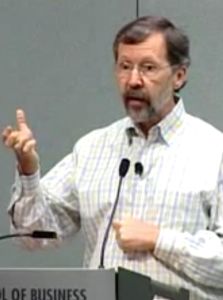Acesse a sua conta getAbstract para obter o resumo!

Acesse a sua conta getAbstract para obter o resumo!
Ed Catmull
Keep Your Crises Small
Stanford Business, 2007
Sobre o que é?
Pixar co-founder Ed Catmull reveals how the studio succeeded amid the messy process of making films.
Recommendation
Co-founder of Pixar Animation Studios, Ed Catmull, spoke about his company at the Stanford Business School. His insightful informal talk covers how Pixar avoided the pitfalls that undermined its competitors. From leveling communication across artistic, technical and managerial roles, to supporting a culture of honesty when hashing out problems, Catmull explains that Pixar exemplifies how companies can ensure their continued success. In its infancy, between A Bug’s Life and Toy Story II, his company faced internal crises it solved by realizing that a team of good people is worth more than a “good idea.”
Summary
About the Speaker
Ed Catmull was president of Pixar Animation Studios when he gave this talk in 2007. He retired in 2018.



















Comment on this summary